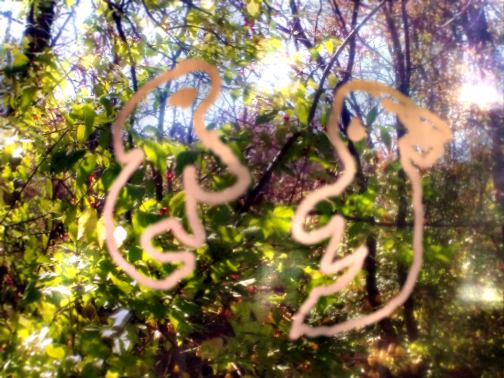Mark Struggles to Find a Place in Wilderness
Text and image by Rick McVicar
The beginning of Mark’s Gospel. 1:1-13, demonstrates a strained relationship with nature as well as people (NRSV). The gospel begins with a solitary figure, John the Baptist, baptizing people in the Jordan River surrounded by wilderness.
No mention is made of anyone else besides John living in the wilderness. Indigenous people are clearly omitted. This appears strange following Hebrew scripture in which many people throughout centuries populated desert lands. The Israelites were certainly no strangers to wilderness.
Why, then, is John standing alone in the wilderness? Perhaps Mark wants to emphasize individual salvation, ripping the gospel message apart from any notion of communal salvation. As a consequence, the natural environment is separated from human salvation as well.
Click on image to go to website of First Christian Church in Mansfield, Ohio.
The Jordan River flows from Mt. Hermon to the Sea of Galilee before going on to the Dead Sea, according to Brittanica.com. The river runs through a deep, rocky ditch surrounded by desert hills. John baptized in the southern portion, which has gentler terrain. The Jordan is known to have the lowest elevation of any river on earth, at about 1,400 feet below sea level. Ironically, people had to go down close to Hades if they wanted to be cleansed by John.
This desert region served as a pathway for migratory birds. Interestingly, the Holy Spirit descended “like a dove” when Jesus was dipped into the Jordan River (1:10, NRSV). The choice of a dove is rather interesting, as Mark could have chosen any bird imaginable. According to “River Out of Eden: Water, Ecology and the Jordan River,” found at abrahamicprograms.uconn.edu, 500 million migratory birds travel through the river valley each year.
In describing Jesus' baptism, Mark includes the natural element of sound, as a voice is heard from heaven (1:11. NRSV). The supernatural, coming from the sky, intrudes upon the natural environment and forces Jesus to bear the brunt of nature.
Jesus then spends 40 days in the wilderness with Satan and wild beasts (1:13). Those beasts would have been plentiful and of a wide variety, as the river valley is touted as an animal sanctuary. Did Jesus live peacefully with the beasts, or was the wildlife on the side of Satan? With Mark’s ambiguous stance towards nature, the question will remain for the reader to decide.
Finally, the region is known for its earthquakes, according to the National Geographic Society. This gives new meaning to Mark’s quotation of Isaiah, “Prepare the way of the Lord. Make his paths straight” (Mark 1:3, NRSV). John was forging straight paths for people amid a region prone to earthquakes, certainly a great job if you can get it.
